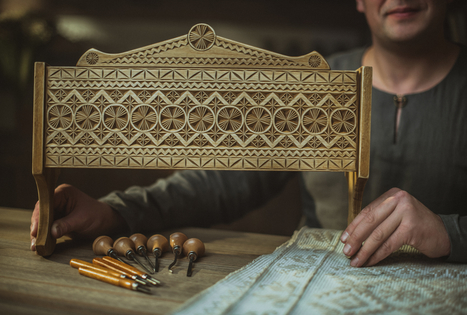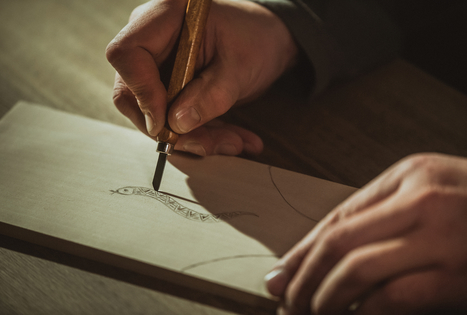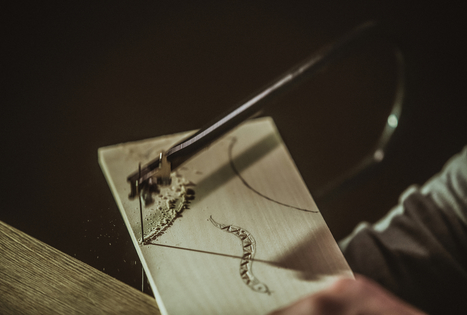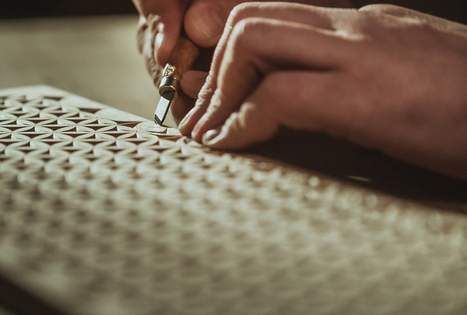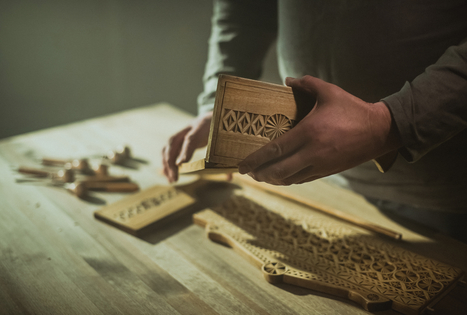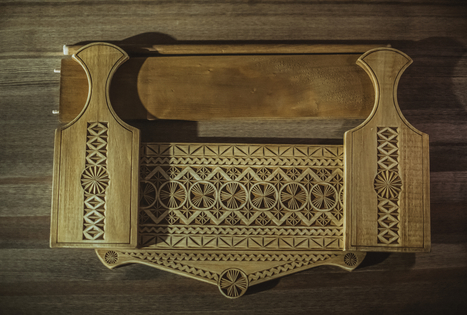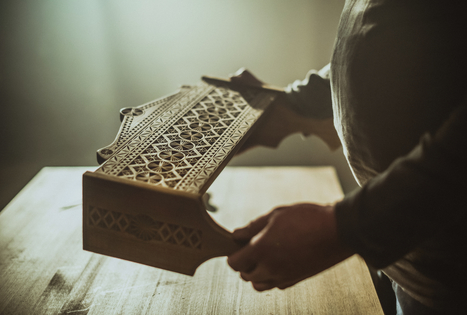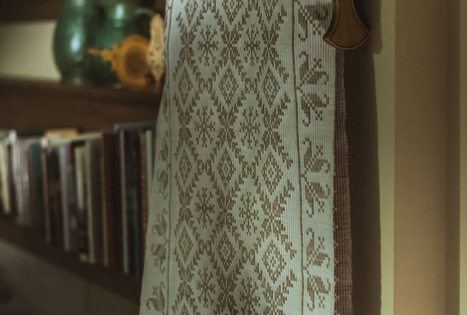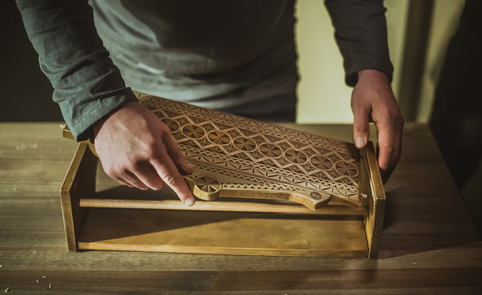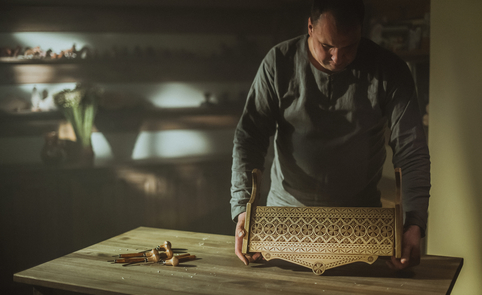Furniture making is one of the fine crafts. Furniture production in Lithuania evolved from the craft of joinery, which has traditions that go back to historical times.
According to taste, capabilities and traditions
The shape and plastic expression of furniture has always depended on the level of development of society and its needs, capabilities, taste, geographical location, national traditions, technical and scientific inventions, and the prevailing style of art.
Furniture makers usually worked at home or travelling around to other people’s homes. Peasants usually invited craftsmen to make dowry chests for their daughters. Upon arrival, the craftsmen found the already prepared wood. Among peasants, the traditional set of furniture included benches, tables, beds, cradles, shelves, cupboards, chairs, towel racks, chests, utensil holders, and chests of drawers.
Some of the furniture stood out for its decoration. The pieces were painted, carved, whittled and turned. After making the furniture, the craftsmen decorated it themselves. They usually patterned and painted them, and added metal trim if necessary. Wooden surfaces were painted, varnished, and veneered with hardwood or precious wood. The décor was coordinated with the shape and material of the furniture. Geometric ornaments with stylised floral motifs dominated. Chests, sideboards and cupboards were painted. Towel racks and watch cabinets were usually carved and cut out. Cupboards, beds and sideboards were often decorated in several ways.
From the simplest to works of art
The rudiments of furniture making emerged in tribal society. Furniture making particularly flourished in ancient Egypt. The Egyptians used drills and planes; they knew how to connect furniture parts, process various types of wood, and decorate the furniture with inlays. The ancient Greeks and Romans already had lathes. Byzantine furniture was skilfully crafted.
However, furniture making technologies were forgotten after the fall of the Roman Empire. In the Early Middle Ages, barbarians made furniture in a primitive way, using only a saw and an axe. Furniture making was only revived in the 9th century after the lathe was reconstructed. It was developed in the Late Middle Ages. In the 14th century, sawmills appeared in Germany. Plywood began being cut mechanically in the 16th century. And since the 19th century, furniture has been produced primarily by the furniture industry.
Official launch of the furniture industry in Lithuania
Furniture used in Lithuania has been described in inventories and court cases since the 16th century. Up until the 17th or 18th century, peasants made simpler furniture themselves, while craftsmen were already making more ornate furniture – usually dowry chests – in the 18th century in Sudovia and Samogitia, and in the 19th century elsewhere.
However, the official launch of the furniture industry in Lithuania was in 1579, when craftsmen in Vilnius received a privilege granted by King Stephen Báthory which permitted them to establish a joinery workshop. It was stated that members could produce and sell a variety of tables, cupboards, window frames and chairs at the Vilnius market. The workshops met the needs of the townspeople, while residents of the surrounding provinces made furniture themselves or hired local craftsmen.
Before and after World War I, the furniture industry was concentrated in Vilnius, Klaipėda, Kaunas and Jonava. Furniture at that time was made entirely of natural wood – often featuring carving and inlays – and was mostly made to order.
Furniture making today
Pieces of Renaissance, Baroque, Rococo, Neoclassical and later styles of furniture that were mainly made for churches and estates have survived to this day. Some pieces were imported from Poland, the Czech Republic and Germany, while others were created by local workshops or individual craftsmen.
Furniture was usually made of wood: oak, pine, fir, birch. Less frequently, it was woven from wicker, carved from stone, cast from metal, or made of plastic. The parts were interlocked, glued, or fastened with beams, screws and bolts. The pieces were reinforced with metal trim and fittings. Springs, horsehair, wadding, seaweed, foam rubber and sponge rubber were used for the soft parts. Furniture was upholstered with leather or fabric.
Based on its construction, furniture is divided into frame furniture and body (box) furniture; tables are a separate intermediate group. In terms of mobility, there is stationary furniture (carved from stone, wall-mounted) and movable furniture; in terms of purpose, there is furniture for seating (stools, benches, chairs, armchairs), lying down (beds, daybeds) and dining (dining tables, coffee tables), and in terms of the nature of production, there is unique and mass-produced furniture. Modern furniture is divided according to the field of application into household furniture (for flats, hotels, holiday homes) and special furniture (for offices, schools, canteens, hospitals, etc.).
Currently, there are 15 certified furniture makers in Lithuania – they produce a wide range of furniture, from chests and towel racks to cupboards, beds and chairs.

